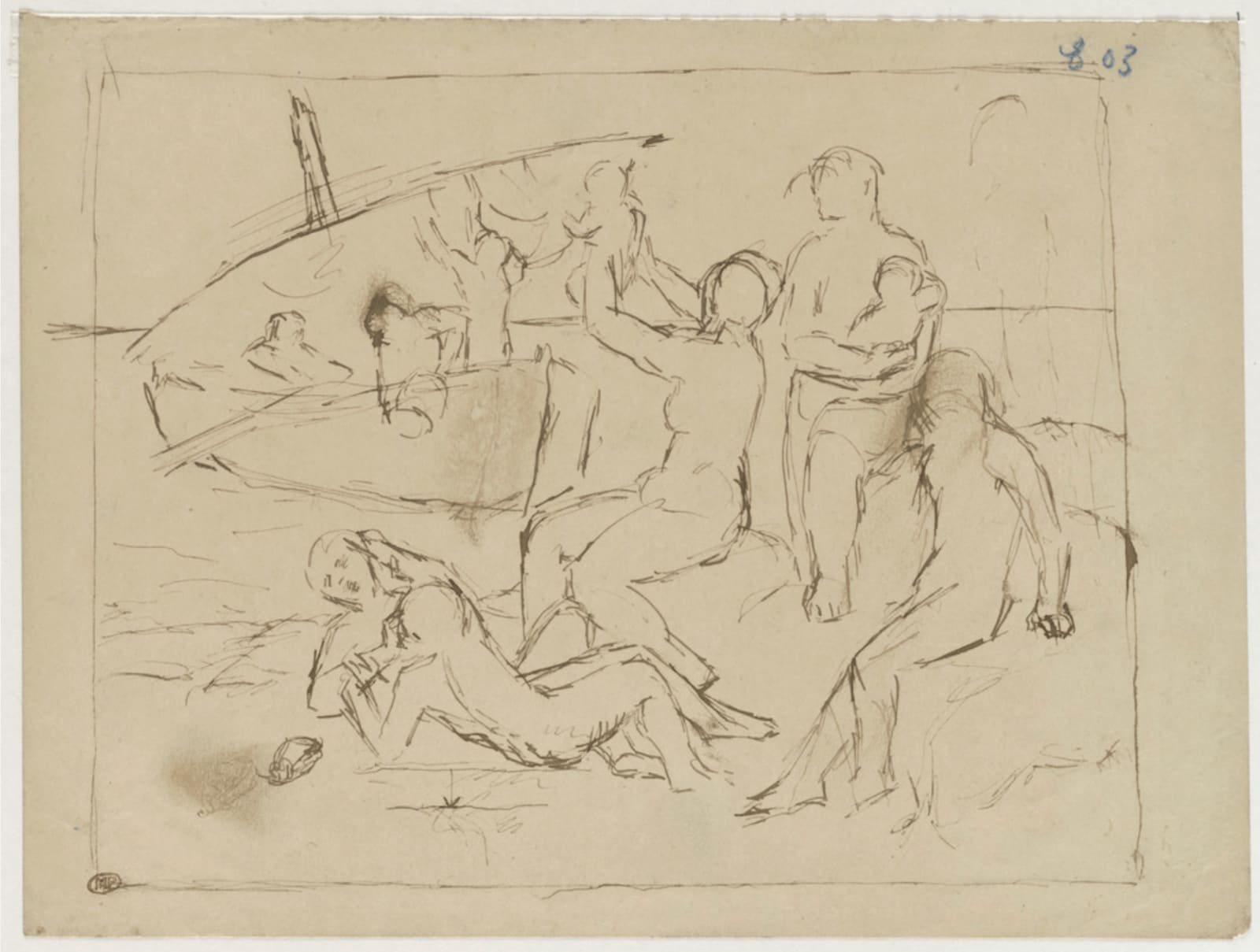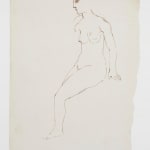

Pablo Picasso
framed 64 x 56.5 cm
Phillips Collection (see additional pics in Images) 15 x 11 in.; 38.1 x 27.94 cm.Credit LineGift of Marjorie Phillips, 1984; © 2022 Estate of Pablo Picasso / Artists Rights Society (ARS), New York
Provenance
Estate of the artist
Marina Picasso, the artist’s granddaughterChristian Zervos, Pablo Picasso, supplément aux volumes 1-5, vol. 6, Paris, 1954, no. 535, pl. 66, illustrated
Pablo Picasso drew Femme Nue Assise in 1903, at the apotheosis of his celebrated Blue period. Picasso’s Blue period is characterized by profound images of melancholy that explore the human condition and helped to cement his position at the forefront of the avant-garde. In the present composition, Picasso demonstrates his adept draughtsmanship and the expressive nature of his line, whilst areas of pentimenti offer a rare window into the working process of the master of modern art.
Picasso’s Blue period was triggered by the suicide of his close friend Carlos Casagemas in 1901. The depression that engulfed the artist was intensified by the feelings of loneliness, insecurity and financial instability felt by the young artist during his early years in Paris and Barcelona. Executed during this pivotal period within the artist’s lifetime, Femme nue assise exudes an atmosphere of reflection and the classical rendering of her face embodies the figurative style that characterizes the works from Picasso’s Blue and later Rose periods.
Literature
Christian Zervos, Pablo Picasso, supplément aux volumes 1-5, vol. 6, Paris, 1954, no. 535, pl. 66, illustratedGirl in a Chemise Tate text and history, https://www.tate.org.uk/research/tate-papers/28/picasso-girl-chemise
See attachments re simialr works in Musée Picasso

